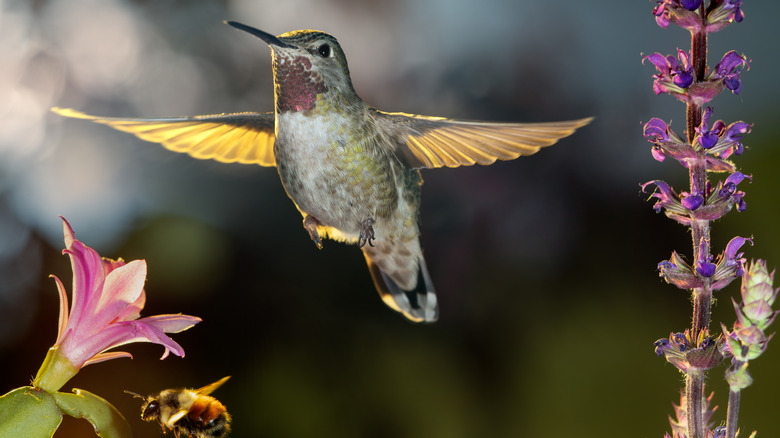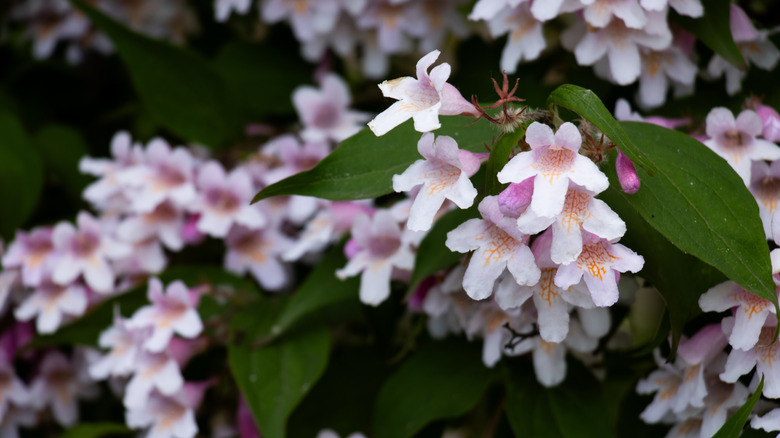The Flowering Shrub Hummingbirds & Bees Can't Get Enough Of
When beauty bush (Kolkwitzia amabilis) blooms, even the hummingbirds and bees line up like it's the hottest brunch spot in town. In spring, the shrub covers itself in soft pink blooms with golden centers, drawing pollinators to every branch. Its tubular, nectar-rich flowers make it a reliable way to attract hummingbirds to the garden by late spring.
Beauty bush grows with a loose structure that fans out like an open fountain. It can grow around 6 and 10 feet, both tall and wide, depending on variety. Most of its leaves cluster toward the top, so the base can look a little bare as it ages, but once the pink blooms arrive in spring, all eyes go straight to the flowers. The foliage stays full through the growing season, turning warm gold in fall. In winter, you still get some texture from its peeling bark and the dry capsule fruits that hang on long after the blooms are gone.
With bold flowers, seasonal color, and winter texture, it checks off the key characteristics of a flowering plant in a low-maintenance package. If you're short on space, the 'Jolene Jolene' variety gives you the same spring show in a smaller package, which is perfect for layering into a pollinator bed or brightening up a tight corner. Its flowers grow on old wood, so blooms will return yearly without much effort as long as you plant it where the pollinators can find it.
How to grow beauty bush in your garden
Beauty bush won't beg for attention once it's planted, but it will reward you with a full spring display that hummingbirds will adore if you treat it right. It doesn't mind a little neglect as long as it gets its basics. This shrub grows best in USDA Hardiness Zones 4 to 8. Plant it in full sun if you want the best flower show, though it'll still grow in partial shade with slightly richer foliage.
It handles average, moist, well-drained soil with no complaints. It also handles clay soil, doesn't seem to attract deer, and can even grow near black walnut trees without a problem. Just be ready to prune if it starts getting dense or leggy. Don't wait too long, though, because if you cut back in winter ... you'll be removing the branches that would've bloomed come spring.
The best time to shape it is right after the flowers fade. You can remove older stems at the base each year to keep it tidy, and give it a harder reset every few years if needed. Beauty bush doesn't deal with any serious pests or diseases either, and once it's settled in, it's easy to forget it's even there until the flowers return and your yard becomes a hummingbird magnet.

